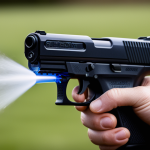Overview of Cross-Training for Figure Skaters
Cross-training is a valuable strategy for figure skaters aiming to enhance their performance and fitness. It involves practicing multiple athletic disciplines to improve overall physical capabilities essential for skating. Integrating various sports and exercises into a skater’s routine offers comprehensive benefits that go beyond traditional skating drills.
The primary importance of cross-training lies in its ability to target different muscle groups, improve endurance, and increase agility. Engaging in activities like ballet and gymnastics complements the core skills required in figure skating, such as balance, flexibility, and coordination. Additionally, it enables skaters to build strength and resilience, which are pivotal during high-stakes performances.
In parallel : Unlock Peak Muscle Gains: How Strategic Protein Timing Transforms Your Weightlifting Success
Recent research supports the inclusion of cross-training in a figure skater’s regimen, highlighting enhanced performance as a significant outcome. Studies show that skaters who participate in complementary athletics tend to recover quickly and sustain fewer injuries, leading to more consistent training periods. Academic findings consistently point out that diversifying training activities can lead to improved spatial awareness and body control, essential for executing complex skating routines successfully.
By harnessing the benefits of cross-training, figure skaters can achieve their peak performance levels with a well-rounded approach that optimises both their physical and mental preparedness on the ice.
In the same genre : Unlock Your Peak Performance: Top Training Techniques to Boost Lactate Threshold for Endurance Athletes
H2 – Physical Conditioning Routines
Understanding the physical conditioning necessary for figure skating is vital for peak performance. A well-structured routine that includes strength training and endurance exercises is critical to achieve this. These elements not only enhance performance but also promote longevity in the sport.
H3 – Aerobic Conditioning Techniques
Aerobic fitness is integral for skaters to maintain endurance during long routines. Effective aerobic exercises, such as running, cycling, and swimming, improve cardiovascular health and stamina. Incorporating these workouts multiple times a week can boost a skater’s resilience, allowing them to execute routines without fatigue.
H3 – Strength Training Focus
For figure skaters, focusing on key muscle groups is essential. Skaters should target the legs, core, and upper body to support jumps and spins. Exercises such as squats, planks, and shoulder presses are beneficial. A sample schedule might involve strength training three times a week, ensuring balanced muscle development.
H3 – Flexibility and Mobility
Flexibility plays a significant role in figure skating technique. Recommended routines include dynamic stretches and yoga, enhancing the skater’s range of motion. Additionally, focusing on joint mobility exercises reduces injury risks and maintains overall agility, which is essential for rapid transitions on the ice. Implementing these consistently helps skaters stay flexible and injury-free.
Integrating Sports for Enhanced Performance
Complementary athletics play a significant role in enhancing figure skating skills by promoting skill transfer and broadening a skater’s physical capabilities. By integrating various sports, skaters can develop a more comprehensive skill set that aids their performance on the ice.
Cross-Training Activities for Figure Skaters
Incorporating sports such as ballet and gymnastics is particularly beneficial for skaters. These activities improve balance, coordination, and flexibility, which are crucial for executing complex skating maneuvers. Ballet refines posture and graceful movements, whereas gymnastics enhances agility and strength. Such sports are vital complementary athletics that match the essential skillsets needed in figure skating.
Elite skaters often share testimonials about the transformative effects of these practices. They’ve reported feeling more balanced and confident on the ice after regular cross-training sessions. Noted skater insights highlight enhanced spatial awareness, contributing to more complex routine execution. For instance, an Olympic figure skater revealed that gymnastics taught them essential acrobatic skills, making ambitious jumps more manageable and safer. These versatile approaches to training illustrate the extensive benefits of sports integration, underscoring its importance in achieving peak figure skating performance.
Mental Preparation Strategies
In competitive figure skating, developing mental resilience is as crucial as physical skills. Cultivating strong mental toughness can dramatically influence a skater’s performance during high-pressure moments. Effective techniques include mindfulness practices and visualization exercises, which help create a mental blueprint for success.
Mindfulness encourages skaters to focus on the present moment, reducing performance-related anxiety. Regular mindfulness sessions can foster a calm and centred mindset, essential for maintaining composure on the ice. Visualization further aids by enabling skaters to mentally rehearse routines, envision success, and refine techniques even when not physically practising. Such mental conditioning is complemented by cross-training, offering diverse settings to build coping strategies under varied conditions.
Incorporating these practices into a training routine provides a comprehensive approach to mental readiness. Elite athletes often endorse combining physical and mental conditioning, noting significant improvements in focus and performance consistency. Emphasising mental preparation alongside cross-training helps skaters handle the emotional demands of competition effectively.
By integrating mental resilience strategies into their training, figure skaters can achieve a balanced mindset, allowing them to manage stress and perform optimally. Using these techniques ensures skaters are mentally equipped to face challenges with confidence and poise.
Case Studies and Testimonials
Case studies provide vital insights into the real-world application and success of cross-training among elite figure skaters. Noteworthy examples include athletes who have integrated diverse athletic disciplines into their routines, showcasing measurable enhancements in performance. These cases highlight the tangible benefits of diversified cross-training strategies, shining light on their impact on athlete development.
In one standout example, a prominent skater revealed substantial improvements in jumps and spins after incorporating gymnastics, illustrating direct skill transfer. Comparative performance metrics often demonstrate increased execution scores and reduced error rates in competitions following the adoption of such training methods. This data supports the strategic integration of complementary sports into skating regimens, resulting in optimal performance optimization.
Testimonials from skaters bolster these findings, with many attributing enhanced confidence and agility directly to their cross-training initiatives. Expert coaches frequently endorse these methods, noting an overall increase in physical conditioning and mental resilience among their athletes. These endorsements from seasoned professionals further validate the effectiveness of cross-training protocols in achieving superior competitive results.
Through these compelling stories and expert opinions, it’s evident that personalised training grounded in scientific research fosters a sustainable path to high-calibre figure skating performance.
Designing a Personalized Cross-Training Program
Creating a personalized training plan is crucial for effective athlete development and performance optimization in figure skating. Tailoring cross-training to individual needs ensures skaters make the most of their training efforts.
Assessing Individual Needs
Understanding a skater’s unique requirements is key to optimal performance. Conduct a comprehensive assessment to identify strengths, weaknesses, and specific goals. This involves evaluating a skater’s current skill level and physical condition to set realistic and achievable objectives. Tools such as fitness trackers and regular skill appraisals aid in monitoring progress, allowing adjustments to routines as necessary.
Building a Sustainable Routine
For a sustainable training regimen, it’s essential to keep skaters motivated and consistent. Encourage balancing on-ice training with off-ice activities to prevent burnout. Mixing exercises, like strength and aerobic workouts, into their schedule helps maintain interest and improve varied skills. Ensure recovery periods and avoid overtraining through rest days and flexibility exercises, reducing injury risks.
To foster ongoing engagement, set short-term milestones and celebrate small achievements. This strategy not only sustains skaters’ enthusiasm but also propels continuous improvement towards their ultimate performance goals. By consistently refining training approaches based on personal progress, skaters can enjoy a well-rounded and fulfilling athletic journey.


